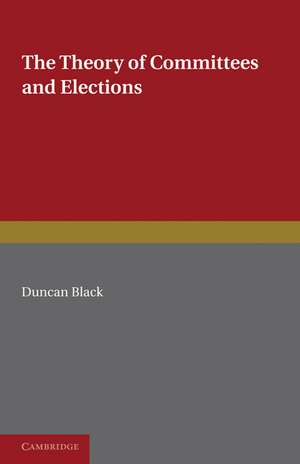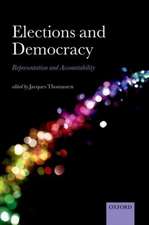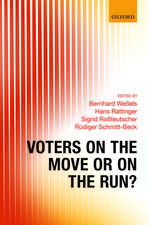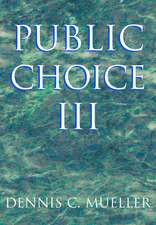Theory Committees and Elections
Autor Duncan Blacken Limba Engleză Paperback – 13 apr 2011
Preț: 282.65 lei
Nou
Puncte Express: 424
Preț estimativ în valută:
54.09€ • 57.84$ • 45.10£
54.09€ • 57.84$ • 45.10£
Carte tipărită la comandă
Livrare economică 18 aprilie-02 mai
Preluare comenzi: 021 569.72.76
Specificații
ISBN-13: 9780521141208
ISBN-10: 0521141206
Pagini: 258
Dimensiuni: 140 x 216 x 15 mm
Greutate: 0.33 kg
Editura: Cambridge University Press
Colecția Cambridge University Press
Locul publicării:Cambridge, United Kingdom
ISBN-10: 0521141206
Pagini: 258
Dimensiuni: 140 x 216 x 15 mm
Greutate: 0.33 kg
Editura: Cambridge University Press
Colecția Cambridge University Press
Locul publicării:Cambridge, United Kingdom
Cuprins
Preface; Acknowledgements; Part I. The Theory of Committees and Elections: 1. A committee and motions; 2. Independent valuation; 3. Can a motion be represented by the same symbol on different schedules?; 4. A committee using a simple majority: single-peaked preference curves; 5. A committee using a simple majority: other shapes of preference curves; 6. A committee using a simple majority: any shapes of preference curves, number of motions finite; 7. Cyclical majorities; 8. When the ordinary committee procedure is in use the members scales of valuation may be incomplete; 9. Which candidate ought to be elected?; 10. Examination of some methods of election in single-member constituencies; 11. Proportional representation; 12. The decisions of a committee using a special majority; 13. The elasticity of committee decisions with an altering size of majority; 14. The elasticity of committee decisions with alterations in the members' preference schedules; 15. The converse problem: the group of schedules to correspond to a given voting matrix; 16. A committee using a simple majority: complementary motions; 17. International agreements, Sovereignty and the Cabinet; Part II. History of the Mathematical Theory of Committees and Elections (Excluding Proportional Representation): 18. Borda, Condorcet and Laplace; 19. E. J. Nanson and Francis Galton; 20. The circumstances in which Rev. C. L. Dodgson (Lewis Carroll) wrote his Three Pamphlets; Appendix; Notes; Index.
Descriere
Duncan Black aims to formulate a pure science of politics by focusing on mathematics of committees and elections.













